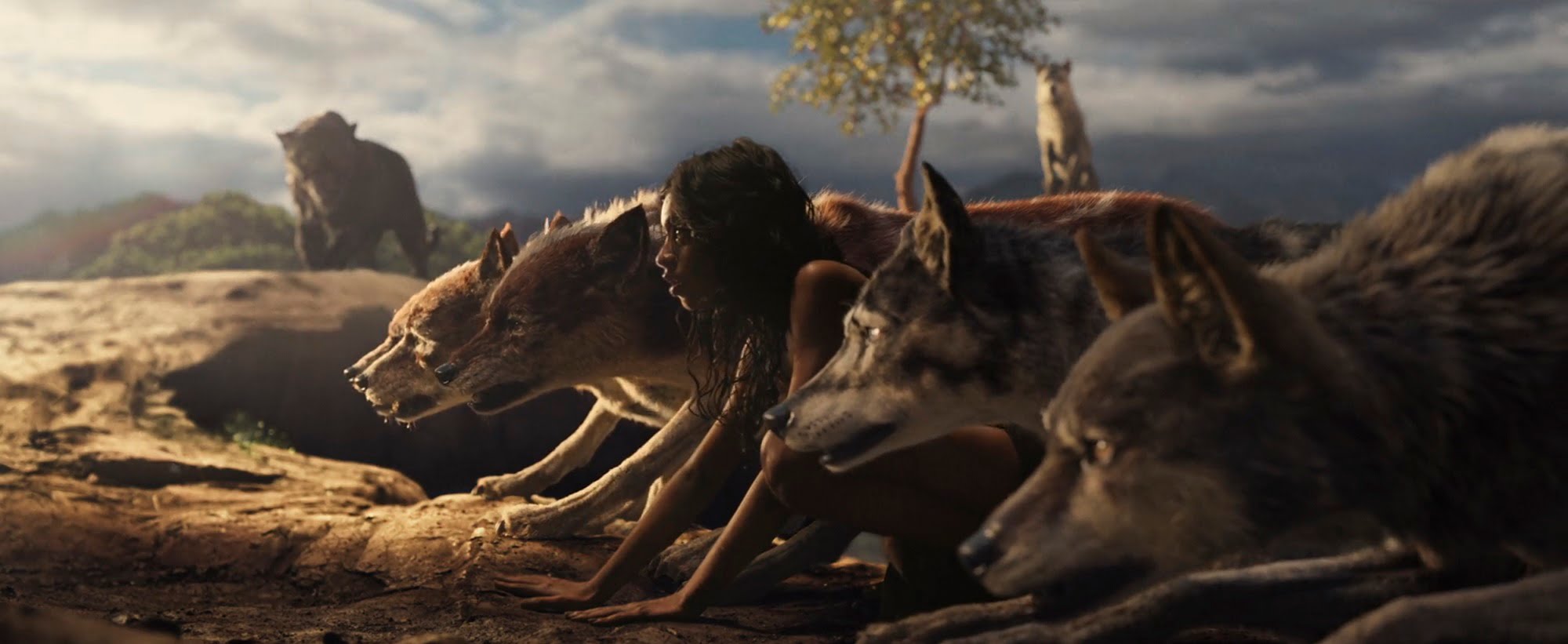A daring, but dazzlingly realized reworking of Rudyard Kipling’s The Jungle Book, Mowgli: Legend of the Jungle is a successful risk that might not be suitable for the youngest of children, but is certainly one of the better and more soulful effects driven blockbusters of the year. Earlier this year, Warner Brothers probably sensed that the second feature from filmmaker and actor Andy Serkis wasn’t traditionally marketable and something that would’ve struggled to recoup even part of its mammoth budget, so they sold it to Netflix, who are giving the film a minimal theatrical release in some cities before releasing it wide on their streaming service. It’s a bit of a shame, since much like the critically adored Roma, Mowgli: Legend of the Jungle would be best experienced in a cinema. Utilizing everything that he’s learned about motion capture technology and visual effects driven storytelling to the fullest of his ability, Serkis has delivered something worthy of much praise and isn’t nearly the dud some industry insiders have speculated from the film’s switch in distributors.
Deep in the jungles of Southeast Asia, where the march of humanity is gradually pushing the area’s wild and feral creatures further and further out of their natural habitats, a baby has been rescued as the sole survivor of a vicious attack on a human encampment perpetrated by the greedy and bloodthirsty tiger Shere Khan (Benedict Cumberbatch). With the parents of the surviving infant deceased, a kind hearted panther named Bagheera (Christian Bale) takes him in, and begs a pack of wolves to help raise the child as their own. Although the animals recognize that their new addition is a man, pack leaders Akela (Peter Mullan) and Nisha (Naomie Harris) reluctantly, but warmly protect the child from Shere Khan and attempt to teach the boy the laws of the jungle with the help of Bagheera and a cantankerous, crusty old bear named Baloo (Serkis). As he grows into a young adult, Mowgli (Rohan Chand) is forced to make a choice between becoming the weakest and least skilled member of his pack or returning to the world of man.
The overall framework of classic and vastly more family friendly retellings of The Jungle Book is on display in debut screenwriter Callie Kloves’ script for Mowgli: Legend of the Jungle, but the tone is a lot more serious and severe, with only occasional flashes of levity throughout. Those expecting a singing, dancing romp from Serkis and Kloves won’t get a shred of that here. The animals still talk, and there are flashes of wit throughout Mowgli: Legend of the Jungle, but the whole thing is played relatively straight. Although the darkness increases the longer the story progresses (including one reveal heading into the third act that will scar impressionable children for life in ways that can only be compared to the likes of The Black Cauldron, The Neverending Story, or The Dark Crystal), Serkis never loses sight of the tale’s roots in fables, mythology, mysticism, nature, and eastern philosophy. The story hasn’t grown much in complexity, but the stakes feel grander here and the emotional weight of Mowgli’s journey is heavier, especially during a long patch of the story where the animals are removed from the equation after the boy is captured by humans.

Visually, Mowgli: Legend of the Jungle also looks a bit better than Jon Favreau’s stunning and lucrative reworking of The Jungle Book for Disney a few years back. The locations certainly look more photorealistic here than the more pastel and brightly coloured locations in Favreau’s version, and cinematographer Michael Seresin (who worked with Serkis on the recent Planet of the Apes sequels) gives his director a wealth of coverage, angles, and movements to create a gorgeously vibrant motion picture. The action sequences, particularly a test of agility and dexterity known as “the running,” are suspenseful and kinetic. The character design on the animals, is expectedly top notch and vividly detailed, with all of Baloo and Bagheera’s scars telling a number of stories.
The cast, maybe with the exception of Cumberbatch, who seems to be portraying Shere Khan as if he were a villainous Frasier Crane (which I guess would make him Sideshow Bob), are all fantastic. Serkis’ portrayal of Baloo as a grizzled grizzly keen on pushing Mowgli to his limits is lightly comedic, but also surprisingly believable. Bale also delivers one of the warmest and most endearing performances of his career as Mowgli’s unlikely father figure. As for Chand, he delivers a star making performance here after starting his career with some wonderful character acting work. Once the film reaches its rousing, but admittedly brutal climactic showdown between Shere Khan and Mowgli, Chand’s performance towers large over the special effects around him. It’s one of the best performances from a young actor this year, and a fitting moral centre for Serkis’ take on the material.
Overall, it’s easy to see why Warner Brothers would get cold feet releasing something like Mowgli: Legend of the Jungle onto three or four thousand screens in a bid to recoup its investment. It’s a tough sell that can’t be marketed as serious motion picture event or as a family film without outright lying to the audience. If you get the chance to see Mowgli: Legend of the Jungle in a theatre, I would urge you to do so, but like most of the best Netflix films, it’s worthwhile viewing in any setting. It’s probably not what you’re conditioned to expect from such a story, but the film is all the better for the subverting of such long standing expectations.
Mowgli: Legend of the Jungle opens exclusively at TIFF Bell Lightbox in Toronto on Friday, December 7, 2018. It’s also available to stream on Netflix the same day.
Check out the trailer for Mowgli: Legend of the Jungle:
Join our list
Subscribe to our mailing list and get weekly updates on our latest contests, interviews, and reviews.

